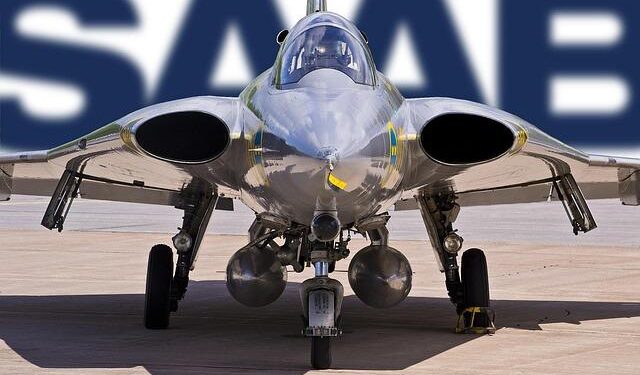As global military dynamics continue to evolve, China is advancing its aerial capabilities with the anticipated deployment of the J-35 naval stealth fighter. With the potential to enhance the People’s Liberation Army Navy’s operational effectiveness, the J-35 is poised to become a key asset in China’s maritime strategy. Recent developments and testing phases have highlighted the aircraft’s advanced design and technological innovations, signaling its readiness for service. As the J-35 prepares to take to the skies, its implications for regional security and the balance of power in Asia cannot be underestimated. This article explores the features of the J-35, its significance for the Chinese military, and the potential ramifications for international relations.
China’s J-35 Naval Stealth Fighter Poised for Operational Deployment
China’s J-35 naval stealth fighter has demonstrated significant advancements as it approaches operational readiness, marking a substantial shift in the nation’s military aviation capabilities. Designed for carrier operations, the J-35 is expected to complement the existing fleet of J-15 fighters, expanding the People’s Liberation Army Navy (PLAN) with a more sophisticated aerial combat platform. With its stealthy design, the aircraft aims to achieve enhanced survivability against advanced enemy radar systems and ground-based air defenses. Key features include:
- Advanced Radar Systems: The J-35 is equipped with cutting-edge radar technology to enable situational awareness and target engagement.
- Supercruise Capability: The fighter can sustain supersonic flight without relying on afterburners, improving fuel efficiency and reducing its thermal signature.
- Versatile Payload: It offers modular internal weapons bays for a range of munitions, including precision-guided bombs and air-to-air missiles.
Recent images of J-35 prototypes suggest that the aircraft is undergoing rigorous testing, showcasing aerial maneuvers and carrier-based operations. Analysts note that its entry into service could significantly bolster China’s naval power projection in contested regions, particularly in the South China Sea. The J-35’s capabilities are expected to be complemented by a comprehensive support network of drone technology and advanced satellite systems. Below is a comparison of the J-35 with other notable naval fighters:
| Feature | J-35 | F/A-18 Super Hornet | F-35C Lightning II |
|---|---|---|---|
| Stealth Technology | Yes | No | Yes |
| Max Speed | Mach 1.8 | Mach 1.8 | Mach 1.6 |
| Carrier Suitability | Yes | Yes | Yes |
| Payload Capacity | Up to 8,000 kg | Up to 9,100 kg | Up to 8,160 kg |
| Supercruise Capability | Yes | No | Yes |
| Advanced Avionics | Yes | Moderate | Yes |
| Primary Role | Multirole Fighter | Multirole Fighter | Stealth Multirole Fighter |
Overall, the J-35 represents a significant leap in China’s military technology, especially for its naval aviation. As it transitions towards operational status, the implications for regional security and power dynamics in the Asia-Pacific region will be closely monitored by global military analysts.
Technological Advancements and Strategic Implications of the J-35 Fighter
The J-35 fighter, often regarded as a technological marvel, is positioned to enhance the capabilities of the People’s Liberation Army Navy (PLAN) significantly. Its blend of advanced avionics, stealth designs, and superior combat systems suggests a marked evolution in fourth-generation fighter technology. Key features of the J-35 include:
- Stealthy Design: The aircraft’s airframe minimizes radar cross-section, making it formidable against adversarial radar systems.
- Advanced Sensors: Equipped with cutting-edge sensor fusion technology, the J-35 can process vast amounts of data, providing pilots with real-time situational awareness.
- Powerful Engines: Featuring engines with thrust vectoring capabilities, the fighter promises enhanced maneuverability, allowing it to outperform traditional naval aircraft.
Strategically, the integration of the J-35 into China’s naval arsenal presents multifaceted implications. It enables China to project power further into contested regions, particularly in the South China Sea. The implications are significant:
| Strategic Impact | Description |
|---|---|
| Increased Naval Air Power | Expands operational reach, challenging regional air dominance. |
| Technological Parity | Closes the gap with U.S. and allied naval aviation capabilities. |
| Deterrence Strategy | Enhances deterrent posture against potential adversaries. |
Recommendations for Addressing the Challenges Posed by the J-35 in Regional Conflicts
In the context of rising tensions in the Asia-Pacific region, the emergence of the J-35 naval stealth fighter compels a strategic reassessment of military capabilities among regional powers. To effectively counteract the challenges posed by this advanced aircraft, nations should consider enhancing their aerial defense systems and fostering interoperability among allied forces. This involves investing in next-generation radar technologies and expanding joint training exercises, which can improve real-time intelligence sharing and integration. Specifically, such initiatives should target the development of multi-domain operations that incorporate air, sea, and cyber strategies to create a robust deterrent posture against potential aggressors.
Furthermore, increasing diplomatic efforts to establish confidence-building measures can mitigate miscalculation risks associated with the deployment and potential engagement of the J-35. Regional dialogues aimed at limiting arms races, along with the establishment of protocols for crisis management, will be essential in maintaining stability. Enhanced engagement with international organizations to promote transparency and information exchange can also empower smaller nations to build a united front while addressing vulnerabilities posed by larger military forces equipped with sophisticated technologies. Ultimately, a comprehensive approach that blends military readiness with diplomatic initiatives will be critical in navigating the complexities introduced by the J-35 in regional conflicts.
In Conclusion
As China’s J-35 naval stealth fighter approaches formal service, its implications for regional and global security dynamics are becoming increasingly significant. With advanced capabilities designed to enhance the Chinese Navy’s operational effectiveness, the J-35 stands poised to bolster China’s presence in contested waters and redefine power projections in the Asia-Pacific region. Analysts will undoubtedly watch closely as the J-35 undergoes further testing and integration into the People’s Liberation Army Navy’s fleet. As military technology continues to evolve and competition among global powers escalates, the unveiling of the J-35 serves as a stark reminder of the ongoing arms race and the strategic maneuvers that define contemporary geopolitics. The coming months may reveal not only the trajectory of China’s military modernization efforts but also the responses from other nations grappling with these developments. As the situation unfolds, one thing remains clear: the global military landscape is continually shifting, and the J-35 is expected to play a pivotal role in shaping its future.














Italy to Deport Egyptian Imam After Controversial Comments at Pro-Palestine Rally